Les films ayant le thème "Documentaire sur la Seconde Guerre mondiale", triés par recette

Enemy of Women (1944)
, 1h25Réalisé par Alfred Zeisler
Origine Etats-Unis
Genres Drame, Guerre
Thèmes Documentaire sur la guerre, Documentaire historique, Politique, Documentaire sur la Seconde Guerre mondiale
Acteurs Wolfgang Zilzer, Claudia Drake, Robert Barrat, Donald Woods, H. B. Warner, Sigrid Gurie
Joseph Goebbels, a down-on-his-luck playwright, boards with Col. Eberhardt Brandt. While there, Goebbels falls in love with Brandt's daughter, Maria, an aspiring actress who does not return his affections. When Goebbels tries to force himself on Maria, Col. Brandt kicks him out of the house, and Goebbels joins the Nazis. Later, as propaganda minister, Goebbels manipulates Maria's career and attempts to force a relationship with her. Maria again rejects him, and he uses his power to blacklist her.
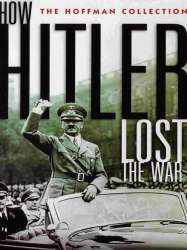
How Hitler Lost the War (1989)
, 1h7Réalisé par David Hoffman
Origine Etats-Unis
Genres Documentaire
Thèmes Documentaire sur la guerre, Documentaire historique, Politique, Documentaire sur la Seconde Guerre mondiale

Les ailes de la défaite (2007)
Genres Documentaire
Thèmes Transport, Aviation, Documentaire sur la guerre, Documentaire historique, Documentaire sur les technologies, Politique, Documentaire sur la Seconde Guerre mondiale
Dans l’imaginaire collectif, les pilotes kamikazes incarnent le fanatisme. Au Japon, on admire le sacrifice de ceux qui lors de la Seconde Guerre Mondiale, se sont portés volontaires. Ce sont en effet des milliers de pilotes que l’armée japonaise, refusant de capituler, a envoyé vers des cibles impossibles à atteindre. Ce que l’histoire ignore, c’est que des centaines d’entre eux ont survécu à la guerre.

To Be Takei (2014)
, 1h30Origine Etats-Unis
Genres Documentaire
Thèmes La prison, Le racisme, Sexualité, La télévision, Homosexualité, Documentaire sur le monde des affaires, Documentaire sur le cinéma, Documentaire sur la discrimination, Documentaire sur le droit, Documentaire sur la guerre, Documentaire historique, Documentaire sur l'homosexualité, Politique, Documentaire sur la Seconde Guerre mondiale, Space opera, LGBT, LGBT
Acteurs George Takei, Leonard Nimoy, Walter Koenig, William Shatner, Nichelle Nichols, Lea Salonga
The film narrates the life journey of actor and activist George Takei.
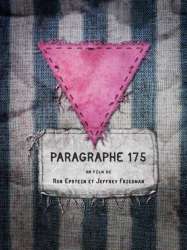
Paragraphe 175 (2000)
Réalisé par Rob Epstein, Jeffrey Friedman
Genres Documentaire, Historique
Thèmes Le racisme, Religion, Sexualité, Homosexualité, Documentaire sur la discrimination, Documentaire sur le droit, Documentaire sur la guerre, Documentaire historique, Documentaire sur l'homosexualité, Documentaire sur la religion, Politique, Religion juive, Documentaire sur la Seconde Guerre mondiale, LGBT, LGBT
Acteurs Rupert Everett
Les homosexuels ont été comme tant d'autres les victimes du régime hitlérien. Ils étaient persécutés en vertu du paragraphe 175 du code pénal allemand. Ce paragraphe, datant de 1871, condamnait à la prison "les actes contre nature" entre hommes.

Russian Soil (1941)
Genres Documentaire
Thèmes Documentaire sur la guerre, Documentaire historique, Politique, Documentaire sur la Seconde Guerre mondiale
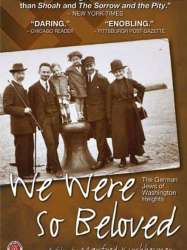
We Were So Beloved (1986)
, 2h25Genres Documentaire
Thèmes Le racisme, Religion, Documentaire sur la discrimination, Documentaire sur le droit, Documentaire sur la guerre, Documentaire historique, Documentaire sur la religion, Politique, Religion juive, Documentaire sur la Seconde Guerre mondiale

Kill or Be Killed (1942)
Réalisé par Len Lye
Origine Royaume-uni
Genres Drame, Guerre, Documentaire
Thèmes Politique, Documentaire sur la guerre, Documentaire historique, Politique, Documentaire sur la Seconde Guerre mondiale
Acteurs Marius Goring

Train Busters (1944)
, 13minutesRéalisé par Sydney Newman
Origine Canada
Genres Guerre, Documentaire
Thèmes Transport, Aviation, Documentaire sur la guerre, Documentaire historique, Documentaire sur les technologies, Politique, Documentaire sur la Seconde Guerre mondiale
Acteurs Lorne Greene
In 1943, the RCAF strength and equipment consists of 32 overseas squadrons based in England. Two fundamental missions were essential to the Allied air strategy: night bombing and interdiction. While bombers struck at the heart of occupied Europe, the German war machine reacted by sending out supplies to their far-flung European bases by rail. The RCAF disrupted the "nerve centres" by attacking the rail system. These specialized ground attack fighters were extremely successful, with fighter-bombers destroying munition trains.

Wings on Her Shoulder (1943)
, 10minutesOrigine Canada
Genres Documentaire
Thèmes Transport, Aviation, Documentaire sur la guerre, Documentaire historique, Documentaire sur les technologies, Politique, Documentaire sur la Seconde Guerre mondiale
As the Second World War continues, the Canadian contribution to the Allied bombing campaign over occupied Europe requires more aviators. The government responds by creating the Royal Canadian Air Force Women's Division in 1941. By 1943, 9,000 recruits, women from all backgrounds, are taking over a wide range of jobs. Women in the RCAF, or WDs as they were called, were clerks, drivers, photographers, air photo interpreters, weather observers, instrument mechanics, parachute riggers as well as many administrative and technical positions in the RCAF. While most WDs were located at British Commonwealth Air Training Plan stations across Canada, many others served overseas with RCAF Overseas Headquarters and

Wasp Wings (1944)
, 42minutesOrigine Canada
Thèmes Transport, Aviation, Documentaire sur la guerre, Documentaire historique, Documentaire sur les technologies, Politique, Documentaire sur la Seconde Guerre mondiale
Starting in England in 1943, Royal Canadian Air Force Spitfire fighter Wings that belong to the RAF Second Tactical Air Force (2TAF) were preparing for deployment to overseas bases. Using the fast and agile Spitfire in a number of different Marks, the 2TAF aircraft provided close air support as well as engaging the Luftwaffe in aerial combat. The Spitfire Wings "played an essential part in a swift-moving, deadly striking air force." The success of the RCAF Spitfire units was due to both aircrew and ground crew that not only set up the tactical airfields but kept the aircraft serviced. The first group sets up in Italy, then other wings are attached to the units committed to the Normandy campaign, with temporary bases established in France, Belgium and Germany from 1944 to 1945. In the last months of the Second World War, 2TAF begin to relax as their missions come to an end.
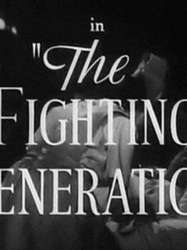
The Fighting Generation (1944)
, 1minutesRéalisé par Alfred Hitchcock
Origine Etats-Unis
Genres Guerre
Thèmes Documentaire sur la guerre, Documentaire historique, Politique, Documentaire sur la Seconde Guerre mondiale
Acteurs Jennifer Jones
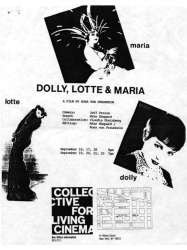
Dolly, Lotte und Maria (1987)
, 1hRéalisé par Rosa von Praunheim
Genres Documentaire
Thèmes Sexualité, Homosexualité, Documentaire sur la guerre, Documentaire historique, Documentaire sur la politique, Politique, Documentaire sur la Seconde Guerre mondiale, LGBT, LGBT
Acteurs Dolly Haas, Rosa von Praunheim
The first of the three women portrayed in this documentary is the innovative dancer/mime/choreographer Lotte Goslar (1907-1997), who worked with Mary Wigman in pioneering modern dance, and choreographed productions by Bertolt Brecht. She developed her own style of expressive dance. In 1933 she left Germany and toured in Europe. Disgusted with Germany's Nazism she exiled herself in the United States. In one of her most famous solos, Grandma Always Danced, she was seen, first, as a baby, then as a bride, a mother and as an old woman. Goslar became a popular teacher of mime and body movement for actors. In the late 1940s, she taught in Los Angeles, where one of her pupils was Marilyn Monroe.
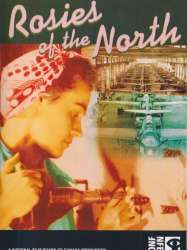
Rosies of the North (1998)
, 46minutesOrigine Canada
Genres Documentaire
Thèmes Transport, Aviation, Documentaire sur la guerre, Documentaire historique, Documentaire sur les technologies, Politique, Documentaire sur la Seconde Guerre mondiale
In 1939, Canada joined the worldwide war effort with factories turning out war machines. At the Canadian Car and Foundry (nicknamed "Can-Car") in Fort William, Ontario, a large workforce was recruited to build the Hawker Hurricane fighter aircraft, including a preponderance of women. Many of them were young, and came from as far away as the Prairies.

Red Shirley (2010)
, 28minutesRéalisé par Lou Reed
Origine Etats-Unis
Genres Documentaire
Thèmes Le racisme, Religion, Documentaire sur la discrimination, Documentaire sur le droit, Documentaire sur la guerre, Documentaire historique, Documentaire sur la religion, Politique, Religion juive, Documentaire sur la Seconde Guerre mondiale
Acteurs Lou Reed
 Connexion
Connexion